
Reliant began as an offshoot of the massive UK bicycle manufacturers, Raleigh, with the company's first product a three-wheeler delivery van, the Ivy Karryall manufactured under license.
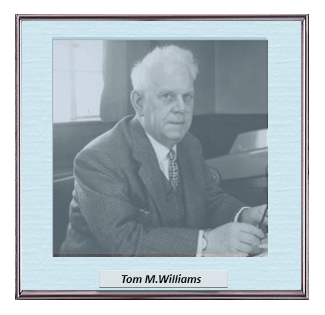 By the mid-Thirties, the board at Raleigh reached the painful decision that the company's future was more secure on two wheels.
By the mid-Thirties, the board at Raleigh reached the painful decision that the company's future was more secure on two wheels.
Sensing an opportunity, Tom L. Williams who designed the Raleigh version of the Karryall van (the Light Delivery Van, or LDV) decided that the time was right to launch his own company.
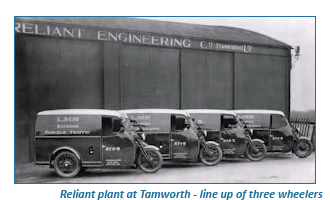 Williams began working from a design office set up in his garden shed in the rural town of Tamworth in Staffordshire.
Williams began working from a design office set up in his garden shed in the rural town of Tamworth in Staffordshire.
Pretty soon Reliant were in production, again from a modest plant, this time a semi-converted and very dilapidated former bus depot in Tamworth.
From there the company began to develop a series of Austin Seven-engined three-wheeler cars and light vans.
![]()
By the end of the Second World War, Tom Williams, having developed his considerable design and engineering skills as far as they could go in the three-wheeler sector, began to turn his talents to developing conventional economy cars.
In the Fifties, Reliant became increasingly active at the opposite end of the performance spectrum, producing top quality sports cars, powered by an in-house developed four-cylinder engine.
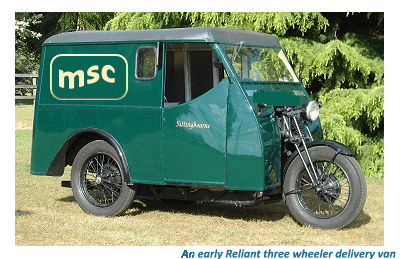 From the early Sixties the company began to build high-performance GT-type cars of high-quality finish and considerable charm (at first in conjunction with the Sabra Motor Company of Israel).
From the early Sixties the company began to build high-performance GT-type cars of high-quality finish and considerable charm (at first in conjunction with the Sabra Motor Company of Israel).
The sole fruit of this union came with the punchy Reliant Sabre, soon followed by the company's innovative Scimitar, designed by the Ogle Design Group.
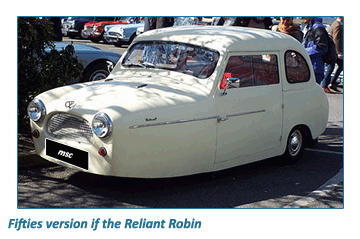 The first Reliant grand tourers, the Sabre were crudely engineered, although the next generation, the Scimitars were much better.
The first Reliant grand tourers, the Sabre were crudely engineered, although the next generation, the Scimitars were much better.
The sporting hatchback Scimitar GTE proved to be Reliant’s greatest commercial and critical success.
During the period, the Tamworth company had also expanded to become the largest single producer of glass-fibre body shells in Europe (in 1967 some 350 sets were produced weekly.)
![]()
In 1960 Reliant produced a total of three thousand vehicles , a figure which increased more than five fold by the end of the decade. Productin figure were boosted by the acquisition of Bond Moters who also produced similar styled light vehicles.
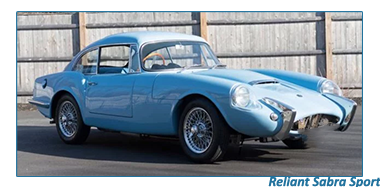 By the end of the Sixties, Reliant could sit back and celebrate ten years of constant, and very successful, development for the company.
By the end of the Sixties, Reliant could sit back and celebrate ten years of constant, and very successful, development for the company.
The Seventies were no less buoyant for Reliant, despite a steady and significant drop in demand for three-wheelers, offset by very strong sales for the Scimitar GTE and GTC.
When demand for the Scimitar GTE began to wane durinf the Eighties, as did Reliant's star gradually faded.
Several changes of ownership and a few financial crises later, Reliant finally gave up the struggle, closing its doors in the early years of the 21st century.






